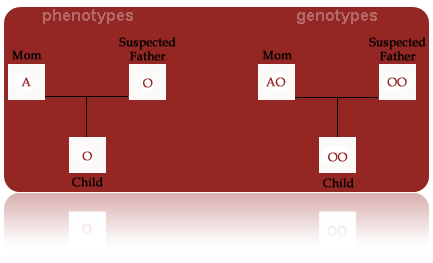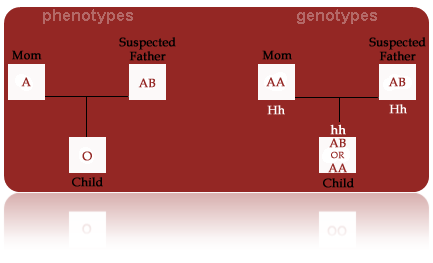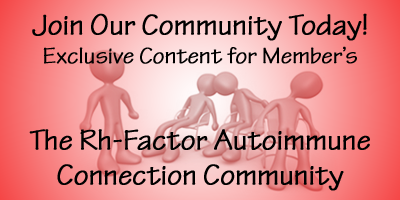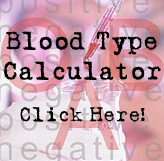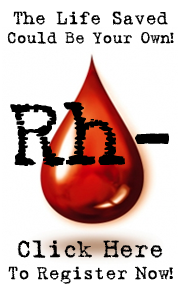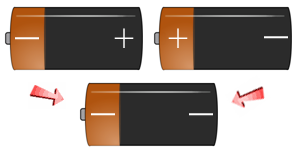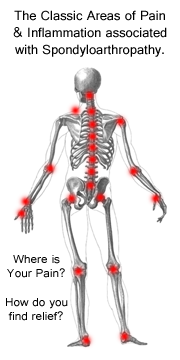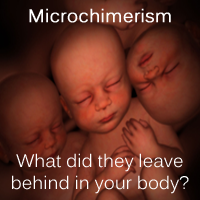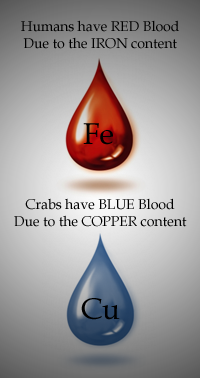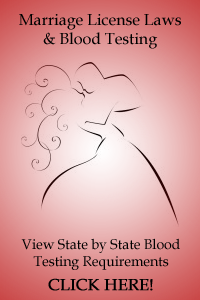Blood Type and Rh-Negative 101
Blood Types ~ Explaining Inheritance and Early Paternity Testing
There are eight recognized blood types, they are A, B, AB and O Positives (Rh+) and their negative (Rh-) counterparts; A-, B-, AB- and O-. First, we will see how our individual Blood Type "Letter" is directly determined by the blood types of both of our parents. Next, we will see how the Rh "Factor" we inherit then fits in, to create the other four (Rh-) negative blood types.
We all have 1 Blood Type, but we all carry 2 individual blood type "letters". The Inheritance Rule says that each parent must give one of their blood type "letters" to each of their children. As a result, we get our blood type directly from both of our parents!
The four main blood types are A, B, AB and O.
The possible blood type "letter" combinations and their corresponding Blood Types are:
| Examples:If one parent was AA and the other was BB, the child could only be an AB. If one parent was AA, and the other was AA, then the child could only be AA. If one parent was AA, and the other was AB, the child would have a 50/50 chance of being either AA or AB, since they must get one "blood type letter" from each of their parents to create their own blood type. |
Enter the Rh Factor
| Examples:If both parents are ++, then the child must be ++. If both parents are - -, the child must be - -. If one parent is ++ and the other parent is +-, there is a 50/50 chance of the child being either ++ or + -. |
A child who is (--) cannot come from a parent who is (++), because the child must inherit at least one of those (+'s).
Both Parents MUST have at least 1 Negative ( - ) "Setting" to have a Rh Negative Child.
| Examples:If both parents are ++, then the child must be ++. If both parents are - -, the child must be - -. If one parent is ++ and the other parent is + -, there is a 50/50 chance of the child being either ++ or + -. |
Early Paternity Testing based on The Inheritance Rule
The Inheritance Rule was considered by law and the medical profession to be an acceptable test when trying to prove paternity and it was used as such until modern day DNA Paternity Testing was introduced and available. Again, this is because if a child was born AA and the mother was AA , they father would have to be AA also. If the "father" was BB; the child's AA blood would prove that he couldn't be the biological father. Equally, if a child was born Rh- (- -) to an Rh- (- -) mother, the father could not have two positive (+ +) Rh "factors", or the child would have to be Rh+. Children must inherit one "blood type letter" and one Rh "factor" from each parent, which in turn directly determines their own blood type.
Common Blood Disorder and Disease Definitions
Click Here
- Your one blood donation can save up to 3 lives!
- The average adult has 10 to 12 pints of blood in their body.
- There is no good substitute for blood, especially Rh- Types, the only place to get it is from other humans.
- Medical research show African Americans have some rare blood traits found in their blood.
- Medical research now refers to Rh- Type O blood, as being the Universal Donor.
- Every 3 sec, someone needs a blood transfusion, that equals 23,040 every day.
- You cannot get AIDS or any other disease by giving blood in a proper donor setting.
- You can give whole blood every 56 days.
- You can donate single platelets every 48 hours,or a single plasma donation every 28 days.
Why Rh-Negative Research?
Read more about why it matters
Two Rh+ people CAN have an
Rh- baby if BOTH parents carry the
RECESSIVE Rh-Negative Factor!
 The Rh Negative FORUM
The Rh Negative FORUM